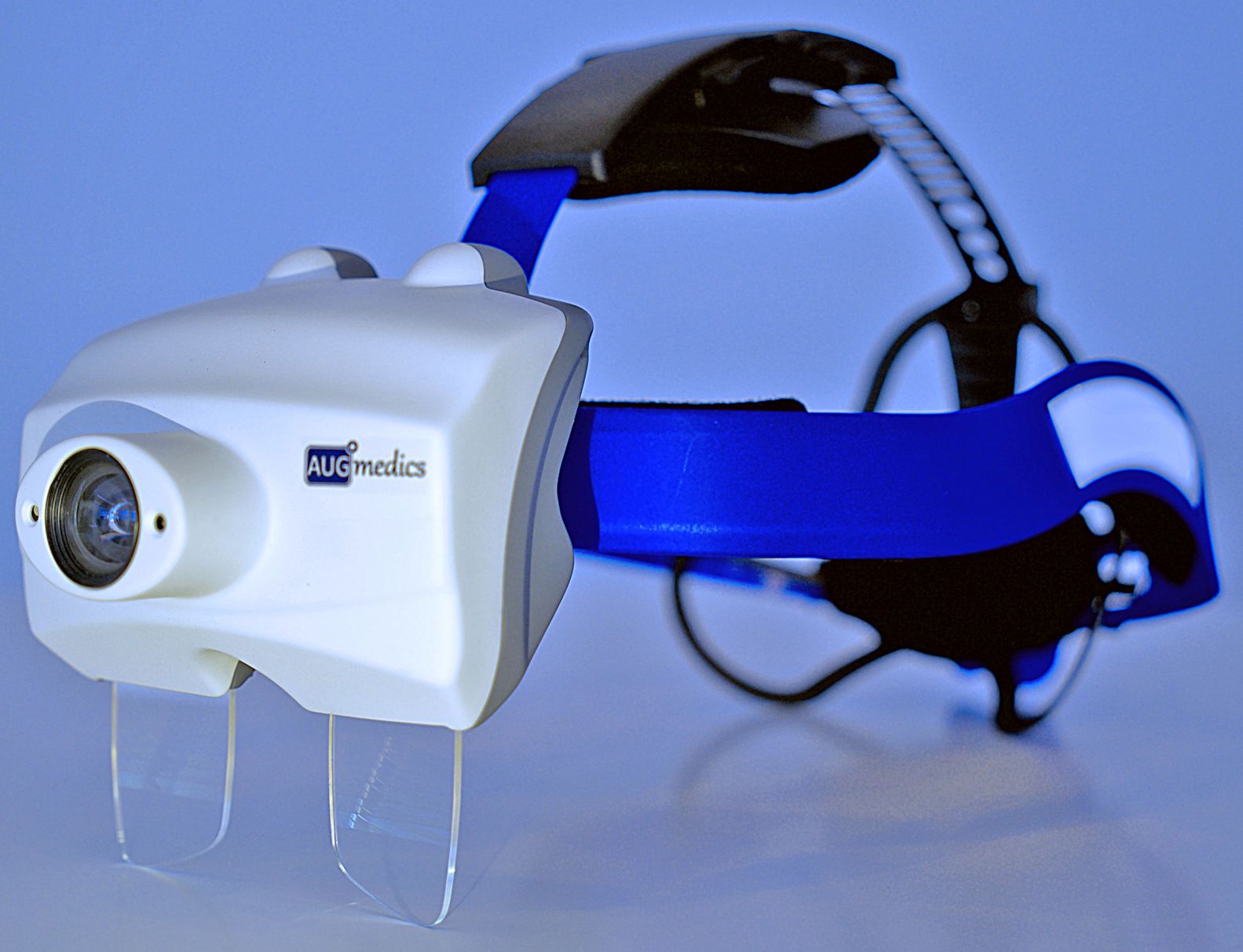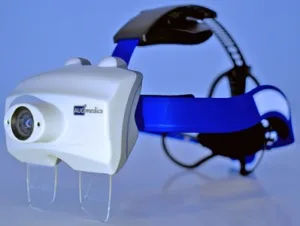Founded in 2014 with seed financing from TerraLab, an incubator of the Israeli Innovation Authority, Augmedics Ltd. (Yokne’am Illit, Israel) is a startup developing a device called the ViZOR System. The device is an augmented reality headset initially intended for use by surgeons performing minimally invasive surgery.

In discussing the ViZOR System, this article focuses on the application rather than the headset technology. The need for this focus is that, at this time, there is little publicly available information on the hardware used in the headset.
It has become a somewhat standard capability in modern hospitals for a surgeon to look at a display screen while performing an operation. The ViZOR System, on the other hand, allows the surgeon to look directly at the patient during the operation, “seeing” right through the patient’s skin and tissue at their internal anatomy. The company refers to this new capability as giving surgeons “X-ray vision.”
The ViZOR headset uses see-through optics to project a 3D image of the patient’s internal anatomy onto the surgeon’s retina – and does so in real time. The headset has multiple sensors to detect the surgeon’s head movements.
The content for the projected 3D imagery derives from CT scans of the patient that were taken previous to the operation. A sophisticated registration process is used to align the imagery from the CT scans with the patient’s physical body.
The company claims that the imagery presented by the ViZOR System serves to greatly enhance the surgeon’s perception. One new capability that is enabled by the ViZOR gives the surgeon the ability to locate tools even if they are below the patient’s skin. The device also lets the surgeon visualize implants, such as screws. Another possible advantage is a reduction in the amount of radiation to which the patient is exposed.
The company believes that, given the capability of X-ray vision, some of the limitations of minimally invasive surgery can be reduced thus enabling easier, faster and safer surgeries. Ultimately, the company hopes that the ViZOR System will reduce the number of unnecessary repeat operations and hospitalizations and contribute to better clinical outcomes for patients.
The ViZOR has the potential for use in conjunction with many types of surgical procedures. The first intended use, however, is in minimally invasive spinal surgery.
Specific to spinal surgery, it is necessary to segment the spine from the rest of the CT scan. An example of such segmentation might, for example, be removal from the digital image the soft tissue surrounding the spine. Many hospitals with CT capability already have the software tools needed to perform this process. Next, the surgeon needs to place markers on the patient’s body to mark the location of specific physical features of the spine. The images derived from the CT scans are registered to these markers. The registration process takes 10-20 seconds. After the registration process, ViZOR can precisely display the otherwise hidden position and orientation of the surgical tools during the operation. By virtue of this registration, even if the patient moves (or even breathes), the ViZOR can automatically adjust the position of the spine imagery in real time.
A video introducing and discussing the ViZOR System can be found at the end of this article. The ViZOR System is illustrated in the figure below.
 The ViZOR System augmented reality headset.
The ViZOR System augmented reality headset.
At the time this article is written, it is reported that about 50 spine surgeons have used the ViZOR System. It has been found that the overall system alignment accuracy is about 1.4mm. The FDA requires a level of accuracy below 2mm.
The company is still working on FDA approval before it can sell ViZOR Systems to hospitals in the U.S. The approval process could take one to two more years.
Augmedics has recently secured $8.3 million in Series A funding. The round was led by led by AO Invest (Davos, Switzerland), “an investment fund run by a board of medical and business experts. The organization focuses on start-ups that are developing innovative technology for orthopedic and trauma surgeons and patients.”
Augmedics says it will “use the proceeds to complete research and development as well as pre-clinical and clinical trials of its ViZOR System, establish strategic distribution partnerships, and seek 510(k) clearance for The ViZOR from the U.S. Food and Drug Administration.”
The company anticipates that the price of the ViZOR System will be “reasonably competitive” with other, comparable products. Such systems typically cost between $200,000 and $500,000.
In the future, “the ViZOR System will leverage various sensors to collect big surgical data to process and analyze using deep learning algorithms. Ultimately, it will also make suggestions, provide alerts and perform other surgical assistance during the procedure.” -Arthur Berman
Augmedics, Nissan Elimelech, [email protected]

